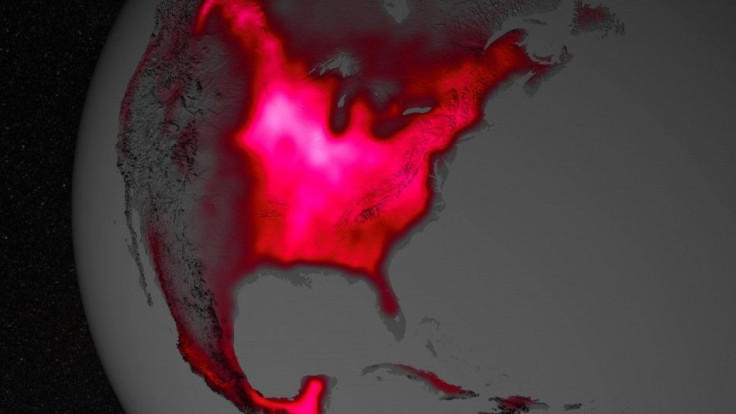Midwest Region of U.S. Boasts More Photosynthetic Activity Than Any Other Spot on Earth - NASA

In a recent NASA report handed out on March 31, the Midwest region of U.S. was shown to have gained the biggest percentage in terms of photosynthetic activity during the Northern Hemisphere's growing season.
A "red glow" appeared on the globe, marking the amount of photosynthetic activity in the region indicating the fluorescence emitted by land plants.
According to NASA and university scientists, as a result of accumulated data from satellite sensors used to measure the "fluorescence" from land plants in the U.S. Corn Belt in early July, over a period from 2007 to 2011, the region boasted "more photosynthetic activity than any other spot on Earth."
Photosynthesis, according to life.illinois.edu, is a process that introduces the energy coming from the sun into the biosphere. The Web site defined photosynthesis as a "physicochemical process by which photosynthetic organisms use light energy to drive the synthesis of organic compounds," like plants, algae and some types of bacteria.
The red glow that appeared in the U.S. Corn Belt indicated there is high productivity in the region. According to NASA, the healthy plants can convert light into energy.
"The magnitude of the glow is an excellent indicator of the amount of photosynthesis, or gross productivity, of plants in a given region," the report said.
NASA has been monitoring the "Earth's vital signs from land, air and space with a fleet of satellites and ambitious airborne and ground-based observations campaigns."
Also, NASA is continuing to integrate its facility for observing and studying the "Earth's interconnected natural systems."
In a recent report delivered by Los Angeles Times, a new field in science called "nanobionics" emerged in connection to productivity. The Massachusetts Institute of Technology (MIT) scientists are conducting field studies and experiments that can boost the capability of a plant in terms of photosynthetic activity.
"The idea is to impart plants with functions that are nonnative to them," Michael Strano, a professor of chemical engineering, told Los Angeles Times.
Nanobionics aims to create "bionic plants" that have the "capacity to increase photosynthetic activity and detect pollutants in the air."
The MIT scientists are now giving the plants extra powers that can solve problems continuously threatening the achievement of high productivity.
READ MORE:
NASA Hubble Space Telescope Celebrates 24 Years in Space; Releases New Image of Monkey Head Nebula
New Dinosaur Discovery: Scientists Call Dinosaur "Chicken from Hell"





















